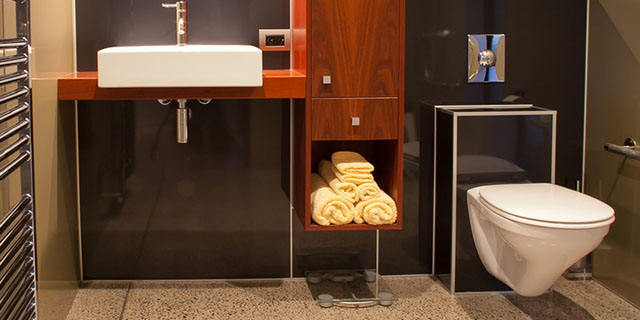Design for Ageing in Place
An introduction to Universal Design

"Universal design is the design of products and environments to be usable by all people, to the greatest extent possible, without the need for adaptation or specialized design."
Ron Mace
A Brief History
Ron Mace was instrumental in the development of “universal design”. This is a term that has been in use since the mid 1980s. Ron contracted polio at the age of nine and in school and university experienced firsthand the barriers that people with disability face daily. Ron’s pioneering work was instrumental in the production of built environment accessibility standards and the passage of national USA legislation prohibiting discrimination against people with disabilities, eg, the (USA) Fair Housing Amendments Act of 1988 and The Americans with Disabilities Act of 1990.
The Seven Principles of Universal Design
Principle 1: Equitable Use
The design is useful and marketable to people with diverse abilities.
Principle 2: Flexibility in Use
The design accommodates a wide range of individual preferences and abilities.
Principle 3: Simple and Intuitive Use
Use of the design is easy to understand, regardless of the user's experience, knowledge, language skills, or current concentration level.
Principle 4: Perceptible Information
The design communicates necessary information effectively to the user, regardless of ambient conditions or the user's sensory abilities.
Principle 5: Tolerance for Error
The design minimizes hazards and the adverse consequences of accidental or unintended actions.
Principle 6: Low Physical Effort
The design can be used efficiently and comfortably and with a minimum of fatigue.
Principle 7: Size and Space for Approach and Use
Appropriate size and space is provided for approach, reach, manipulation, and use regardless of user's body size, posture, or mobility.
Benefits to the Individual from Universal Design
The degree of difficulty that people experience when using a product, service or environment can vary, for example:
- A person who has no significant problems but who would appreciate a well-designed accessible and usable product, service or environment
- A person who has little difficulty with all features
- A person who has difficulty with some features
- A person who has trouble with most features
- A person who is unable to use the product at all.
However, if a product, service or environment is well designed, ie, designed in accordance with Universal Design Principles, all people in the above categories will benefit. The human-centred approach to design that Universal Design supports is user-friendly and convenient, but also respectful of user dignity, rights, privacy, and age. Universal Design creates inclusive design solutions and promotes accessibility and usability, allowing people with all levels of ability, and particularly older persons, to live independently. Therefore, universal design in the built environment has a key role to play in addressing the needs of ageing populations, the latter being a global phenomenon.
“Universal Design assumes that the range of human ability is ordinary, not special.” Elaine Ostroff, 2001
More information:
1. The Center for Universal Design
https://www.ncsu.edu/ncsu/design/cud/about_us/usronmace.htm
2. Institute for Human Centered Design
https://www.humancentereddesign.org/universal-design/history-universal-design
3. The Centre for Excellence in Universal Design.
http://universaldesign.ie/What-is-Universal-Design/Benefits-and-drivers/
[Source: Mary Ann Jackson, Managing Director, Architect, Planner and Access Consultant, Visionary Design Development Pty Ltd, www.vdd.com.au/]